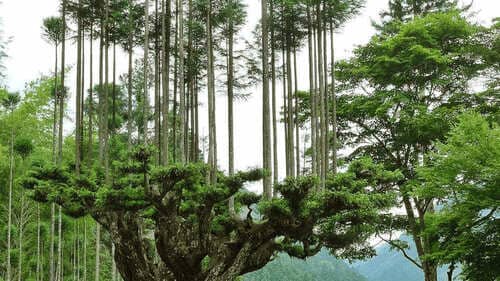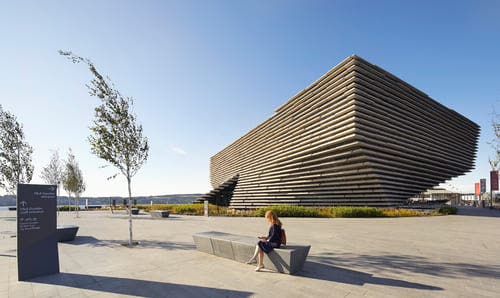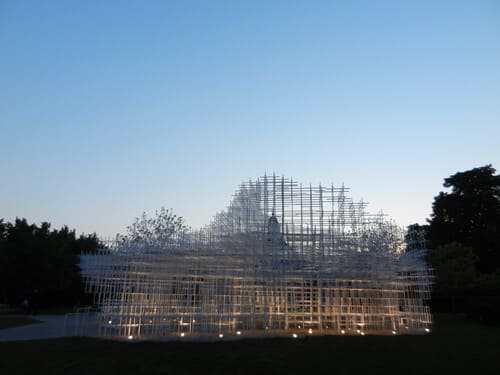Daisugi is a traditional agricultural technique in Japan that involves cultivating trees vertically to obtain high-quality timber. This technique originated in the Kitayama region of Kyoto Prefecture and has been used by local farmers for centuries. Here’s everything you need to know about daisugi and its benefits.
Origin and History of Daisugi
The practice of daisugi emerged in the Kitayama region during the 14th century when local farmers realized they could cultivate cedar trees without waiting for decades for them to grow naturally.
Daisugi involves selectively pruning young cedar trees to encourage the growth of multiple straight shoots instead of just one. These shoots are then directed upward in a vertical pattern, creating a forest of slender, straight trunks.
In this way, trees grow in this pattern for decades and can be used to produce high-quality wood.

Environmental Benefits of Daisugi
Daisugi offers several environmental benefits as it promotes forest conservation and biodiversity. Instead of clear-cutting entire forests for timber, daisugi allows trees to continue growing and maintaining their natural ecosystems.
Furthermore, the daisugi technique is sustainable in the long term, as trees cultivated in this manner can last for hundreds of years.
Past and Present Uses of Daisugi
In the past, daisugi was used to create high-quality beams and posts for the construction of temples, houses, and other significant buildings. Today, cedar wood obtained through this technique is used for crafting objects, furniture, and flooring.
Daisugi has also caught the attention of architects and designers seeking high-quality and sustainable wood, even though the technique remains relatively unknown outside of Japan. Some notable architects who have incorporated daisugi wood into their designs include:

Museo V&A Dundee (Imagen: Hufton + Crow / arquine.com)
1. Kengo Kuma:
Japanese architect Kengo Kuma has used wood obtained through the daisugi technique in several of his projects, including the V&A Dundee Museum in Scotland and the National Stadium of Japan in Tokyo.

Sou Fujimoto, Serpentine Pavilion 2013 (Imagen: Daniel Portilla/archdaily.mx)
2. Sou Fujimoto:
Japanese architect Sou Fujimoto has also utilized daisugi wood in various projects, including the Serpentine Gallery Pavilion in London.
Each of these architects has found a way to incorporate Japanese tradition and sustainability into their works through daisugi wood.
Cultural Aspects of Daisugi
Daisugi is a technique passed down through generations by farmers in the Kitayama region. It is not only an impressive example of how traditional agricultural techniques can be innovative and sustainable in the long term, but it also holds significant cultural and heritage value for the region.
Today, the daisugi technique has been recognized as an intangible cultural heritage of Japan.
In conclusion, daisugi is a traditional Japanese agricultural technique that has been used for centuries to cultivate trees vertically and obtain high-quality wood. This method carries both environmental and cultural significance, promoting forest conservation and holding heritage value for the region.
